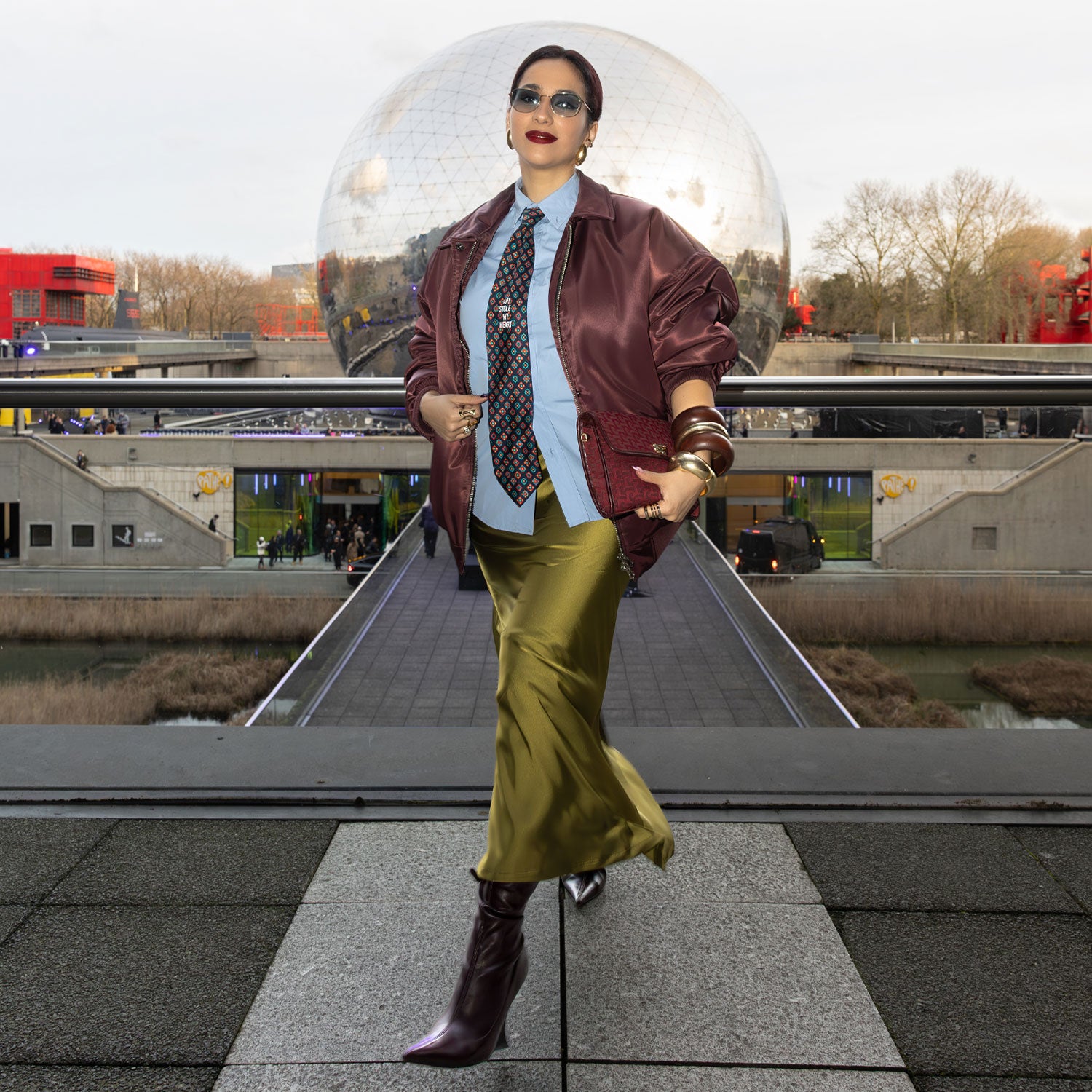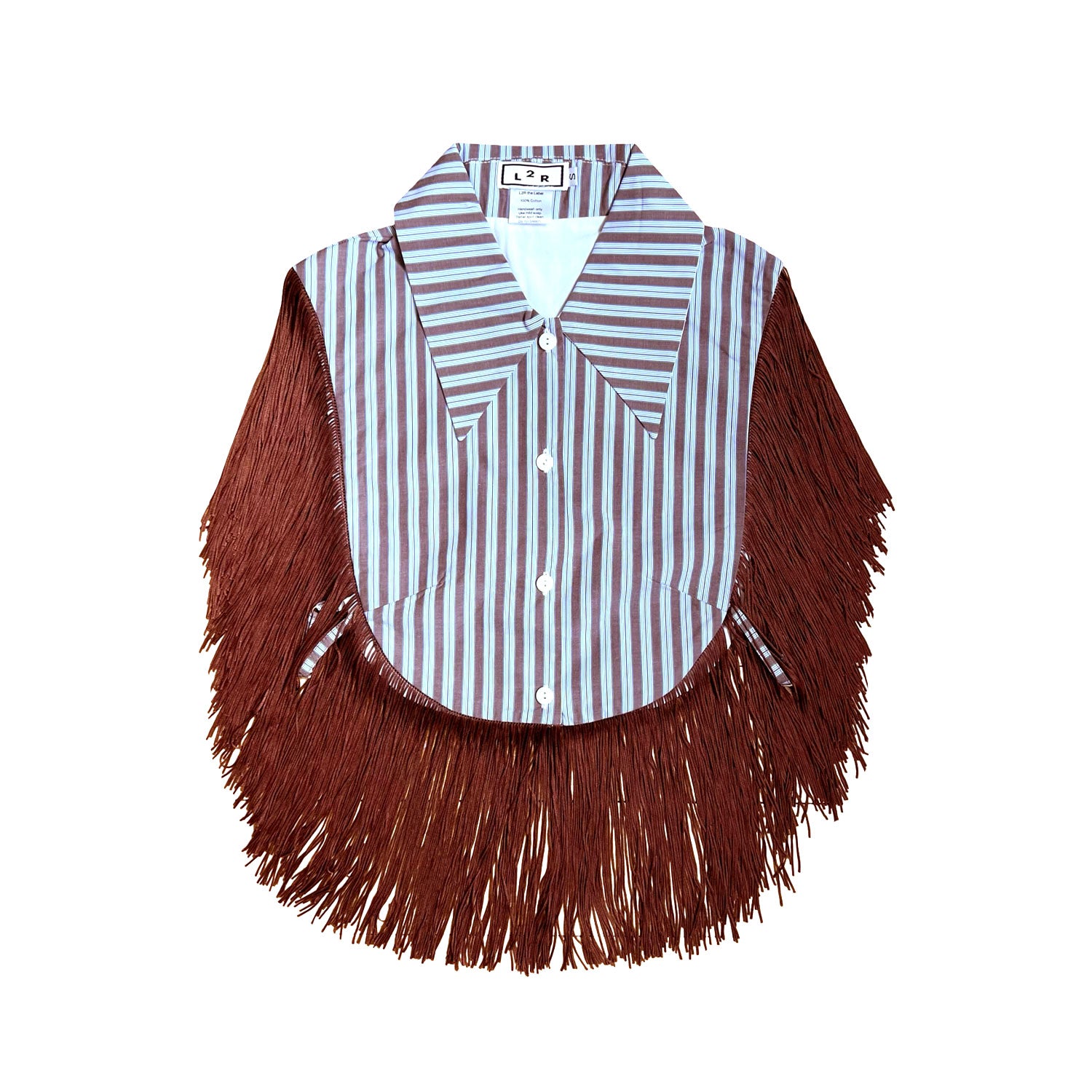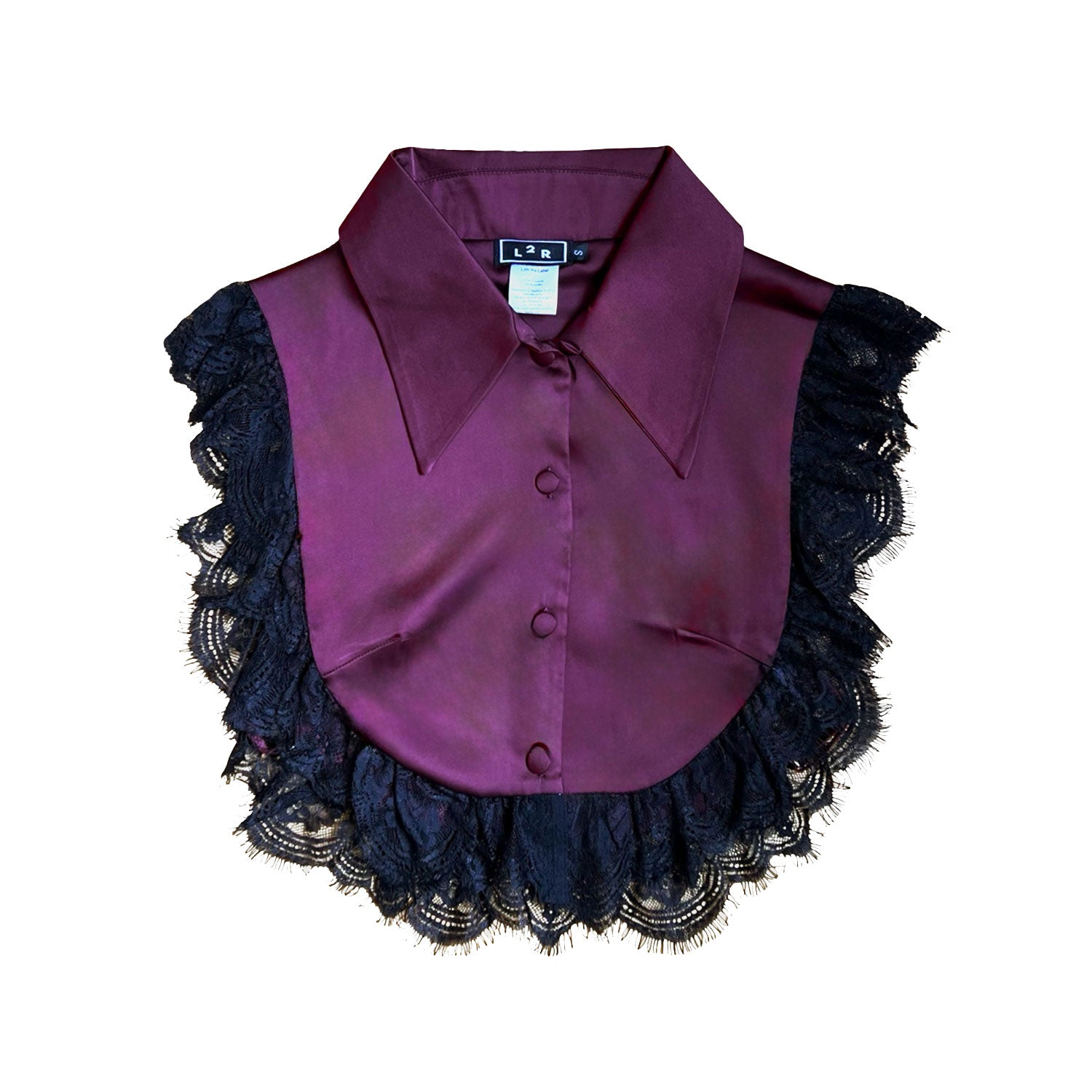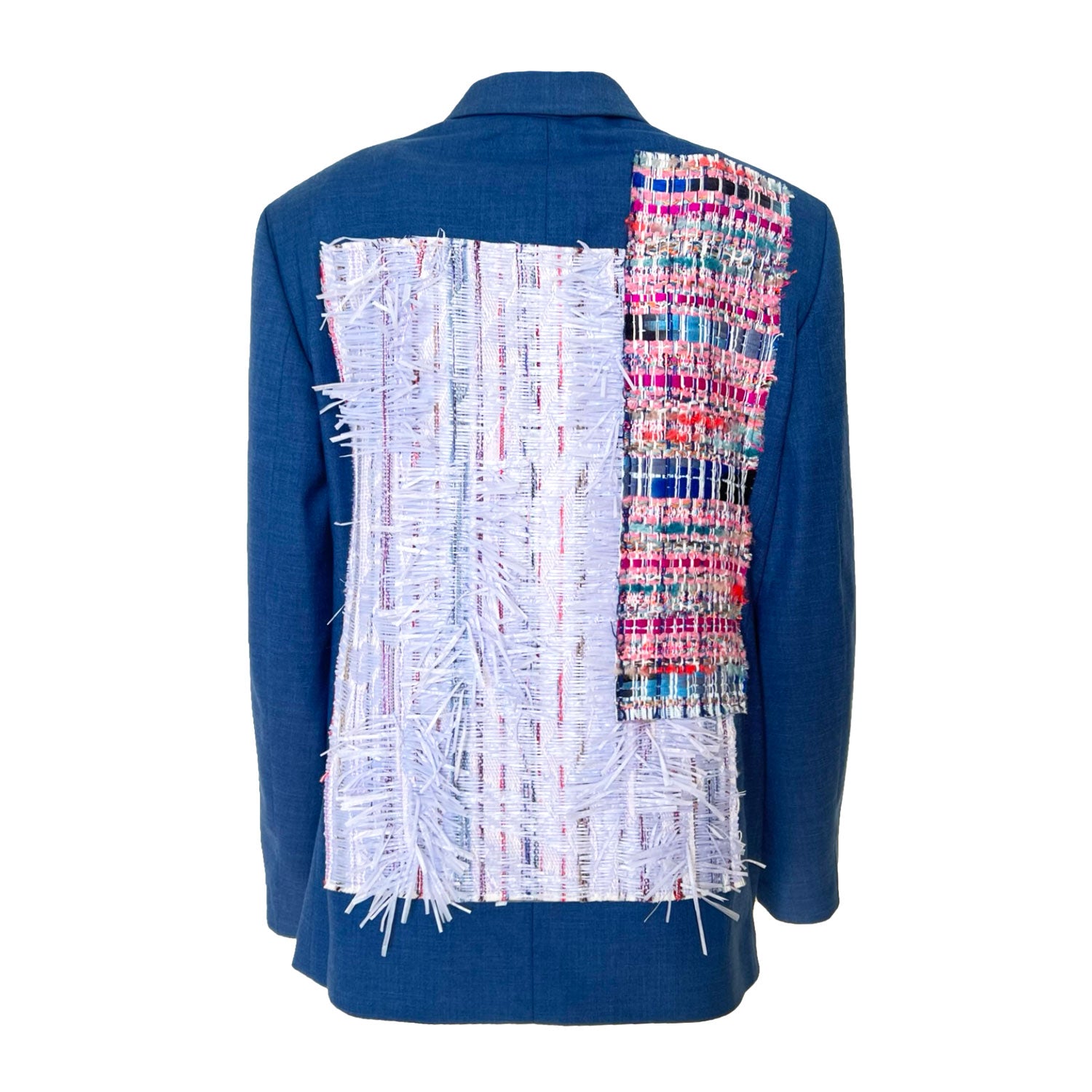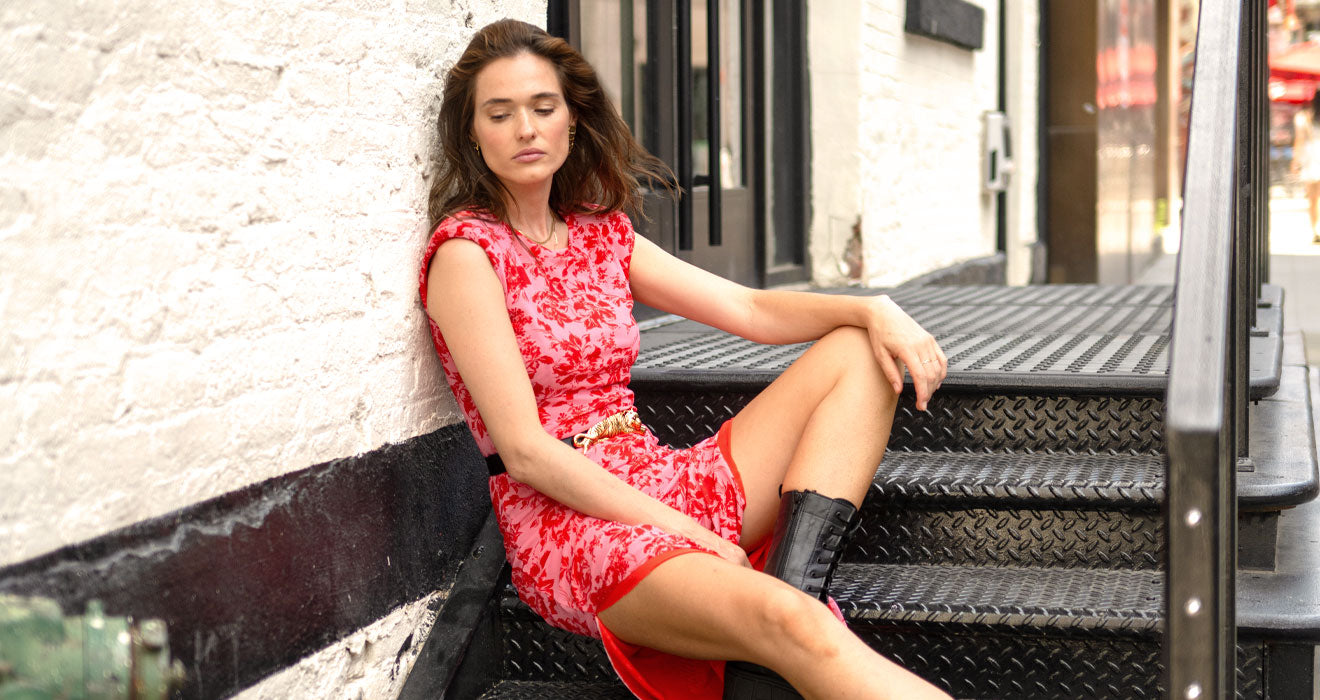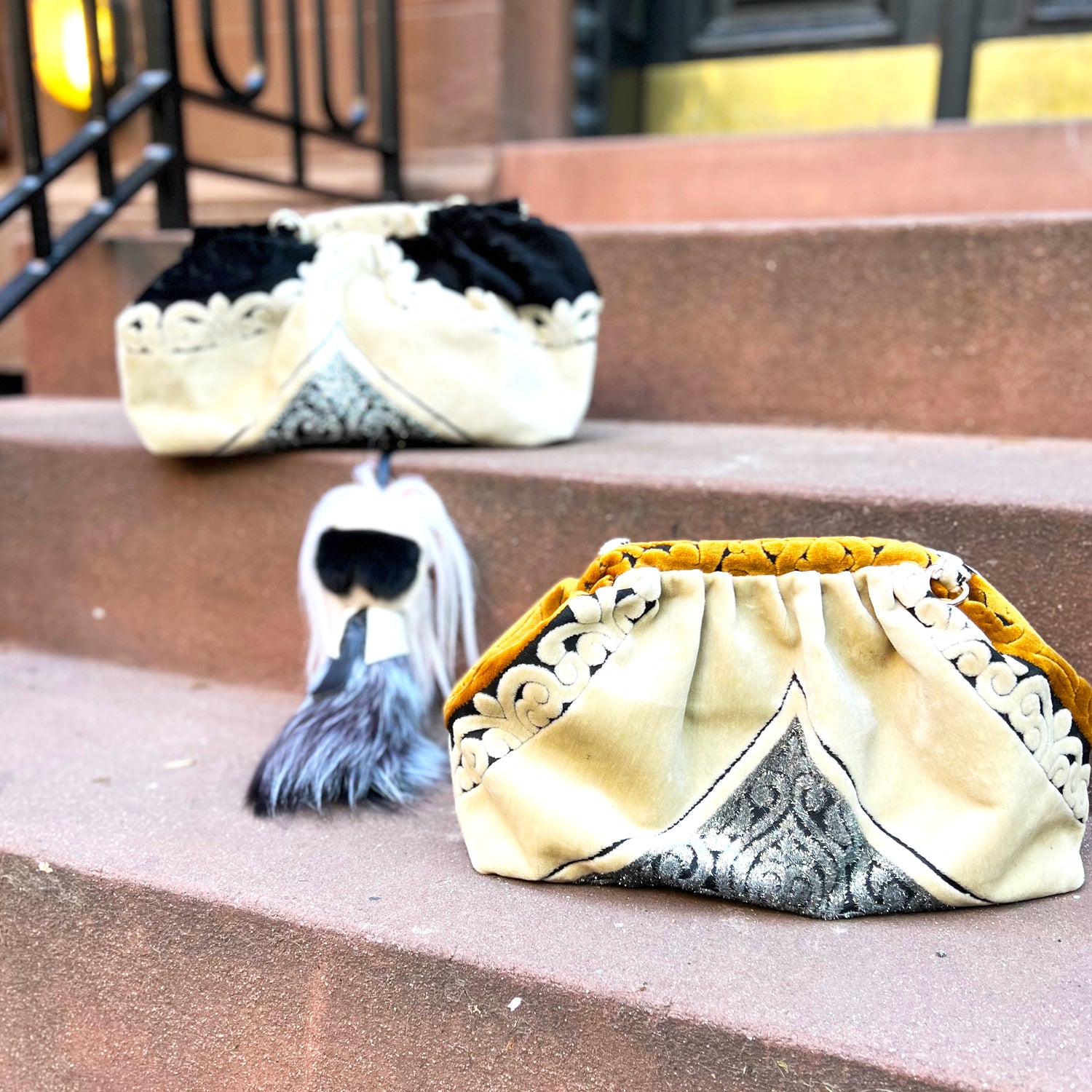
#NOWASTENOBULLSHIT #NOAPOLOGIES
A significant rise in sustainable culture has begun flooding the garment industry as brands from Gucci to H & M tout the greener practices they claim to be woven into their fashion lines. As luxury powerhouses and street labels alike continue to make sustainability a key element of their corporate messaging, it seems that every day another brand is announcing an eco-conscious collection or a socially responsible initiative aimed at reducing waste and increasing planet awareness.
A growing number of fashion labels are weaving environmental sustainability into their brand ethos, revolving their marketing efforts around how they’re bettering the world with their eco-conscious practices. But a paradox exists in an industry that urges shoppers to purchase new looks every season while also attempting to convince consumers to pare down. No matter how much sustainability sells, a large portion of eco-friendly fashion brands are typically not affordable for the masses, restricted to higher-end brands for the wealthy minority.
The more affordable fast fashion brands have attempted to make their own attempts at creating sustainability-related messaging, but with massive inventories and large brick-and-mortar carbon footprints, how honest can their claims really be? Hidden behind the bargains, pesticide use, human exploitation, and waste are keeping real sustainability far out of reach.
With consumers reprioritizing how and where they spend their money since the pandemic tilted the world on its axis and inflation began to rear its ugly head, brands must respond to stay relevant.

For the environment to become a true business priority, fashion brands at both ends of the price scale must commit to the cause and weave it into every level of their company operations before ever making green initiatives the center of their splashy marketing campaigns. This requires businesses to take a good look at their own data, evaluate what’s important to their customers, and strategize what they need to do to keep those consumers buying their products.
Many positive changes can contribute to a brand’s sustainable philosophy. Opting for smaller inventory, decreasing brick and mortar space, paying fairer wages, sourcing locally, and manufacturing ethically are some small steps that can get the ball rolling.
While there’s no doubt sustainability is important to many consumers, hopping on the trend haphazardly will undoubtedly backfire. But incorporating sustainability into the mix doesn’t necessarily require making massive operational overhauls or investments. In fact, sometimes small changes can reap the greatest rewards.
While profits might suffer in the short run, a commitment to making small, realistic steps towards sustainability instead of overpromising, greenwashing, and under delivering will win the hearts and minds of the consumer in the long run.
Instead of making outlandish, impossible promises, brands committed to the cause are starting by establishing short-term goals and holding themselves accountable to hitting those goals, knowing perfectly well that consumers will see right through it when they don’t. Being transparent–even painfully honest–about failures or mistakes actually works to build more trust with consumers than trying to sweep them under the rug.
So, the question remains: can affordable brands seize upon consumers’ skyrocketing interest in a sustainable fashion without “greenwashing?”
The truth is sustainability doesn’t have to be exclusive to the pricier fashion market. Fast fashion must slow down its desire to accumulate capital and speed up its collective eco-consciousness for sustainability and affordability to truly coexist so the everyday consumer doesn’t need to choose between the two.

Marathon, Not a Race
For fast and slow fashion alike, the race to sustainability should be a marathon, not a sprint. Attempting to flip a brand’s message too quickly could backfire as savvy consumers become increasingly aware of the impact that enormous production models have on the environment.
But completely revamping operations in favor of more sustainable methods isn’t always a realistic option. Fast fashion brands need to be honest about how much they can realistically make sustainable changes, starting by taking small, simpler steps like trimming down the number of styles, reducing the quantity produced, and sourcing from more ethical producers.
If fast fashion brands set realistic goals and convey those goals to their customers, the industry can begin to move closer to a place where sustainability and affordability can be united.

How Zero-Waste Brands are Uniting Sustainability with Affordability
So, can sustainable fashion really be affordable?
Yes, it absolutely can. The zero-waste movement is the fashion industry’s newest answer to uniting sustainability with affordability.
As eco-conscious times converge with outside forces like inflation and supply shortages, more designers are turning to scraps, leftovers, and materials they already had on hand to create their designs.
With as much as three-fifths of all textiles ending up in incinerators or landfills and the average American tossing 80 pounds of clothing each year, fashion is playing an enormous role in the climate’s decline.
While mismatched patterns, clashing shades, and imperfect fabrics might have been unacceptable in the past, there is a burgeoning trend in fashion to eliminate waste and give new life to the dead —deadstock, that is.
This marriage of reducing waste and slowing down production is at the center of a whole new leg of the fashion industry. Not cheap, fast fashion and not expensive high-end, zero-waste brands are emerging to create unique fashion options that are not only planet-friendly but are more accessible to the everyday consumer.
Combining style with sustainability, zero-waste brands like L2R are leading the charge.

Upcycling is one way to ensure sustainability because it promotes the idea of circular fashion. Using the already-made and improved-upon, and turning it into something fresh keeps older clothing and textiles in circulation–not landfills.
The use of deadstock and already existing fabrics like pattern cut-offs and discards gives clothing a second lease on life. Reducing fashion industry waste, and therefore the number of chemicals, water, and greenhouse gasses produced when manufacturing fabrics, reduces the amount of new clothing becoming yesterday’s trash.
And customers are getting wiser to the situation every day. Growing increasingly tired of greenwashed catch-phrases, consumers are becoming savvier about their purchases and ready for transparency and action – not just empty promises.

No longer satisfied with “big talk” and off-the-rack uniformity, the rule
books have been tossed and replaced with an obsession with the
unexpected and the un-new.
Meeting customer demands to see change happen and bring true eco-chic style to market, L2R is making unique, upcycled, and one-of-a-kind designs accessible and affordable. Crafted from fabric remnants and disregarded textiles, using ethically-sourced deadstock, outcasts, and discards, L2R makes no apologies for their intentionally unintentional style.
L2R’s designers, a bunch of eco-kind artists and environmentalists have come together to create masterpieces for change, crafting each piece with the same attention to detail, pride, and concern for the planet.
Using only ethically-sourced leftover textiles, discards, unused garments, and luxury scrap fabric in their creations, partnering with artisans and small factories around the globe, L2R offers consumers a real path towards sustainability, the power to advance their values without compromising their personal style, and affordable price tags, making greener options more sustainable and accessible.

L2R is committed to integrating a forward-thinking mindset into every
design, from concept to construction, always keeping transparency
and sustainability at top of mind.
L2R designs are focused on creating universal patterns and silhouettes, gender-fluidity, relaxed fits, and oversized silhouettes, with a diversity in fabric and texture that showcases vibrant colors, embroidery, prints, and unique impressions in every piece. Making sustainability affordable, a commitment to meeting consumer demands for eco-kindness is woven into the very thread of the brand.
Absolute zero waste production means no thread or shred of fabric ever goes to waste.

L2R’s Quilted Shell Down Opera Coat, created entirely from rescued remnants, is intentionally inspired by 1950s vintage style. The large spread shirt collar, relaxed silhouette, dropped shoulders, and gently puffed three-quarter sleeves make this the perfect layering piece, worn belted or loose.
*** The leftovers from this coat were further rescued to create tote bags and clutches.
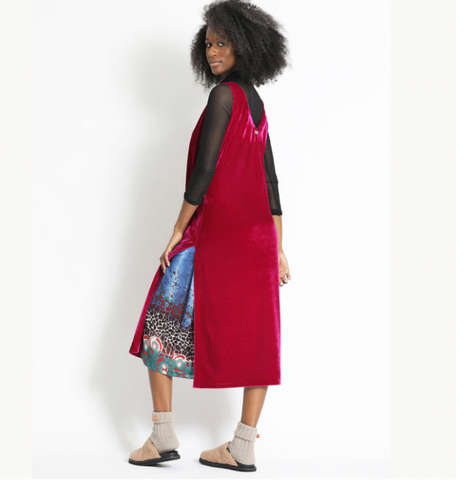
Part of the Halima Collection, L2R’s Marcel Tank Dress delivers a relaxed silhouette, hidden gems, and a relaxed thrift-store chic vibe.
By intentionally creating unique, unconstructed, and unabashed pieces
that work across the collections, L2R was created to make sustainable
designs accessible to all by restoring, recycling, and redefining
fashion, uniting affordability with sustainability.

About the author
Eileen Honey Strauss is an American journalist and freelance lifestyle copywriter, specializing in the beauty, fashion, food, and design industries. A graduate of Arizona State University, with a BS in Broadcasting, Eileen has been a professional writer for over 15 years. See more articles by this author @eileenhoneystrauss.com.

